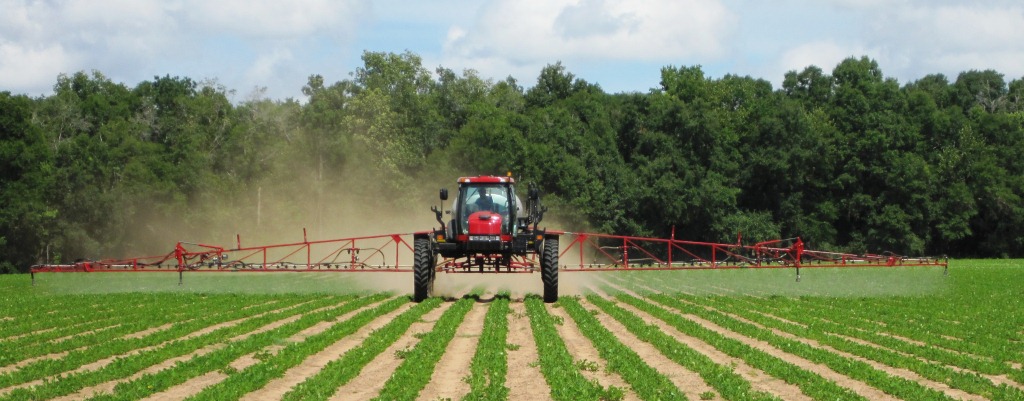
Crop oil adjuvants can boost herbicide activity on hard to control weeds. There is some confusion, however, about how much crop oil to add to the sprayer tank to get the right mix. Photo credit: Doug Mayo
Jay Ferrell and Ramon Leon, University of Florida Weed Specialists
A crop oil adjuvant is an essential part of many herbicide applications. When conditions are dry or the weed is a “hard to control” species, a crop oil can often boost herbicide activity. However, when looking at product labels, you will often see recommendations that say, “apply 1 quart per acre or 1 gallon per 100 gallons of water.” The problem with these two recommendations is that carrier volume (amount of water being sprayed per acre) is not taken into consideration. For example, if you are applying herbicides at 25 gallons per acre (GPA), then a crop oil rate of 1 quart per acre and 1 gallon per 100 is exactly the same. But, if your carrier volume is 10 GPA, then 1 quart per acre will equal 2.5 gallons per 100.
So why are the labels written this way?
Years ago, when most of these products first came to market, farms were smaller and spray applications of 20+ GPA was common. In this scenario, the label provided two ways of calculating how much crop oil was to be poured into the tank since the per acre and by volume calculations were essentially identical. But over the past 20 years, farm size has steadily increased and carrier volume has steadily decreased. Today, the per acre rate and by volume measurements don’t always add up.
Why do we use crop oil?
The point of a crop oil adjuvant is to improve herbicide uptake. It does this by increasing droplet retention on the leaf AND partially dissolving leaf waxes so the herbicide can more easily pass this barrier. However, if the crop oil rate is too high, you can see leaf burning simply due to the oil stripping the leaf wax away, causing the tissue below to dry out and die. So it is important to use enough crop oil to improve herbicide performance, but not so much to unnecessarily exaggerate crop injury.
So which rate do we use, per acre or per volume?
Currently, carrier volume varies tremendously from farm to farm. There are growers that spray at 5-8 GPA while others use 15 GPA. With this great variation in carrier volume, a “per acre” rate of crop oil should not be used as a blanket recommendation. Therefore, it is easiest to use to a per volume crop oil rate so that carrier volume per acre is not an issue. In our research, we have found that 1% crop oil (1 gallon per 100 gallons of water) performs adequately across a wide variety of weed species and environmental situations. Hopefully switching to a 1% solution of crop oil can simplify this issue and add some consistency to your spray programs.
For more information on this topic please see the following UF/IFAS Publication:
Pesticide Adjuvants
- The How and Why of Preemergence Herbicide Incorporation for Row Crops - April 28, 2017
- Using Dicamba on Dicamba-Tolerant Crops - March 3, 2017
- Managing Dicamba Drift when using New Dicamba Resistant Cotton Varieties - January 27, 2017
